Pool Safety is the number one most important aspect of pool ownership. A swimming pool is a great way to relax and have fun, but it does harbor very real dangers that must be met with responsibility and respect. Spartan Pools is here to help educate you on proper pool safety rules and practices. However, the following information serves as a starter guide/checklist designed to help promote and support safety awareness and education in and around residential swimming pool areas. This information is not intended to be used as an exclusive reference for consumers (and others) to ensure that proper safety installation, operation, measures, and equipment have been met.
Here are several safety tips to get you started:
ADULT SUPERVISION
Adult supervision is the #1 most important safety guideline for all swimmers. At least one adult (who is not swimming) should keep a sober eye on the pool and everyone in it. This person should not be afraid to enforce pool safety rules and should understand the importance of safe practices in and around any open body of water.
Fencing
It is required that all inground pools have a fence installed which encloses the swimming pool area. The fence should be a minimum of 4-feet high. Many different types of fence are available to suit need and style preference. Such as Chain link, wooden, ornamental, even thick hedges, etc…
Important: Present ideas/plans to your local building code office before proceeding.
Safety Covers
A non-penetrating mesh cover that completely covers pool can be installed easily, blocking access to pool water.
Alarms
Some people have opted to put an alarm in or near their pool, which triggers a loud sound to warn parents or guardians. Alarms include, but are not limited to door Exit/Home Security, Fence Gate, Pool, etc…
Rope and Float Line
Safety ropes and float lines can be placed across the pool to visually alert swimmers to the separation of deep and shallow end of the pool.
Life Ring, Shepherd’s Crook (Hook)
Life rings (or preservers) and other life-saving devices should be kept near the pool within plain view and easily accessible. These devices are used to pull someone from the pool to safety. Periodically check and keep all safety equipment in proper condition.
Emergency Information and Safety Kit
A first aid kit is always a good idea to keep in a safe and convenient location. Periodically check to make sure the kit is well stocked with all the essentials. Most importantly, remember to post all CPR, emergency (911 or other) contact information and warning signs in a visible spot near the pool.
Safety Drills:
Perform regular pool safety drills to remind everyone what to do/where to go in the event of an emergency in or around the pool.
Outside Telephone:
A cordless, or cellular phone is convenient and a good idea especially if you need to call for help or information quickly and without leaving the pool area.
Sunscreen
Skin cancer is a very real threat. Always wear sunscreen! Choose the level of protection that’s right for you and use it! Even on cooler, cloudy days, the sun’s ultraviolet rays can burn and damage skin cells.
Cleaners, Chemicals, and Maintenance
All cleaning and maintenance supplies should be kept in a locked storage area, away from children and pets. Always check supply labels for proper storage requirements and expiration dates.
Chemical Spills
Spills happen. Practice care and caution when applying chemicals to the pool, always read the directions, and in the event of a spill:
- USE EXTREME CAUTION!
- Be sure that no contaminant is present. Some common contaminants are household cleaners, detergents, bleaches, solvents, ammonia, fertilizers, gasoline, or kerosene.
- Wear protective gear (safety goggles, rubber gloves, etc…)
- Isolate the spilled material in a clean, dry container away from other stored chemicals, preferably outside the house or shed.
- Use only clean, dry brooms, shovels, and containers. DO NOT use a vacuum cleaner
- Separate spilled material from the original container. NEVER return spilled material to original container.
- NEVER put spilled material in any sewer or drain.
- Small amounts of clean, spilled material can be added to your pool water. Check water chemistry to avoid imbalance.
- IF ANY EVIDENCE OF A FIRE OCCURS, EVACUATE THE AREA IMMEDIATELY AND CALL THE FIRE DEPARTMENT!!
We hope this helps keep your summer fun happy and healthy! If you have any questions, concerns, or additional tips about pool safety please feel free to contact us and we will be glad to help.
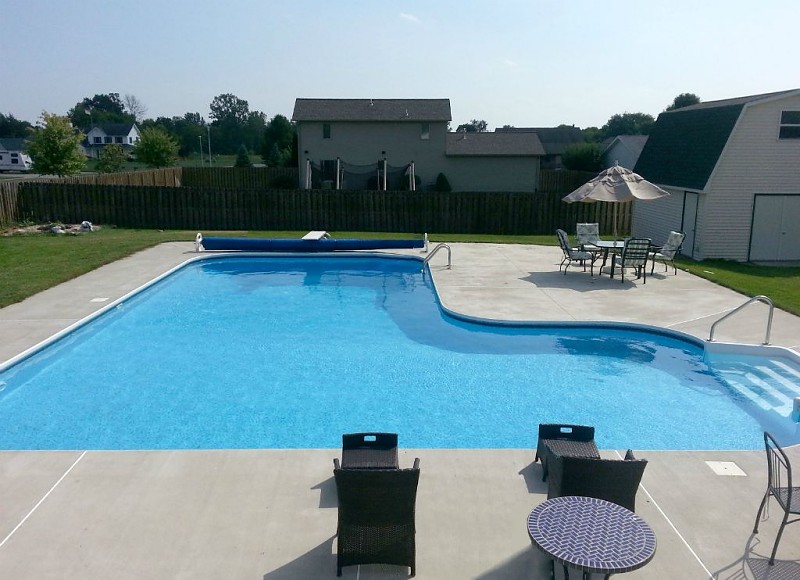
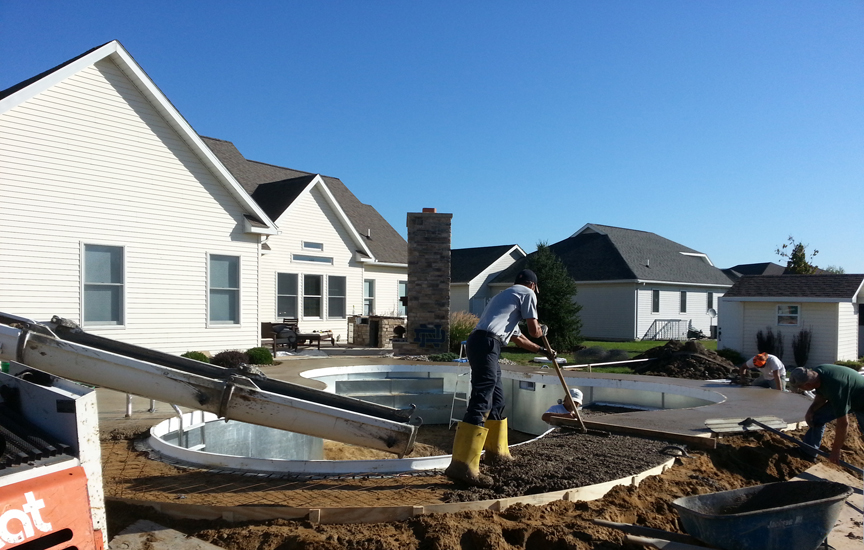 pool planning to the end and every summer after that. We dig the hole to spec; aided by laser technology and years of excavation experience. We set in place galvanized steel panels and cement them in to form sturdy, lifetime guaranteed, pool walls. We create a hard-bottom pool floor that withstands Michigan’s harsh weather conditions. We install only the most high-quality liners from suppliers we trust. We do our own flat work. We do all this for you to ensure the pool you get is the pool you want. Accept no substitutes!
pool planning to the end and every summer after that. We dig the hole to spec; aided by laser technology and years of excavation experience. We set in place galvanized steel panels and cement them in to form sturdy, lifetime guaranteed, pool walls. We create a hard-bottom pool floor that withstands Michigan’s harsh weather conditions. We install only the most high-quality liners from suppliers we trust. We do our own flat work. We do all this for you to ensure the pool you get is the pool you want. Accept no substitutes!
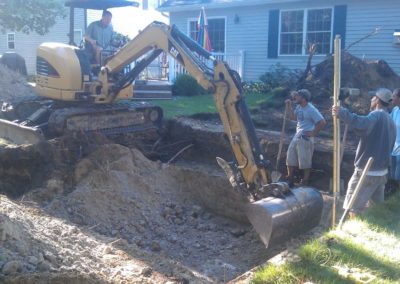
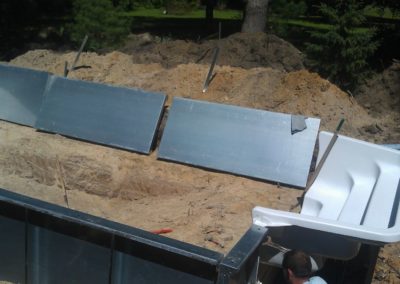
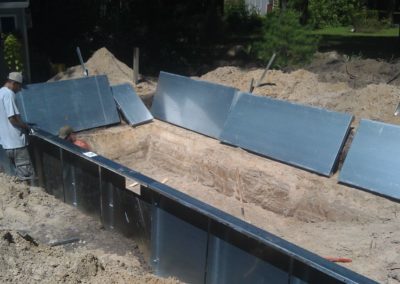
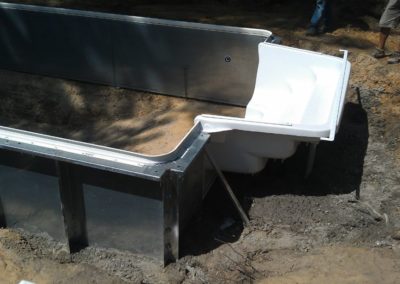
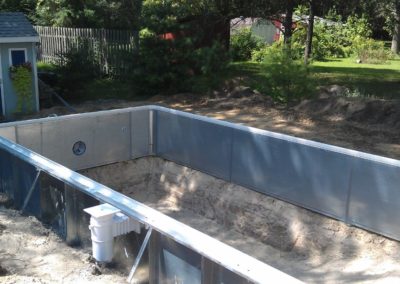
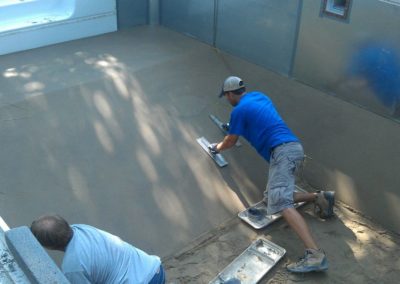
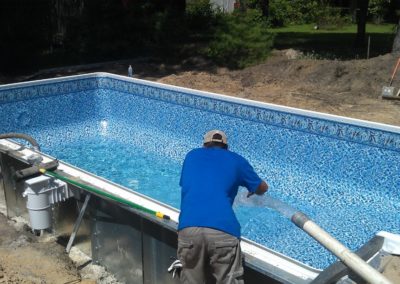
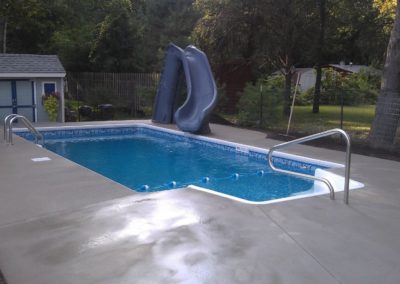
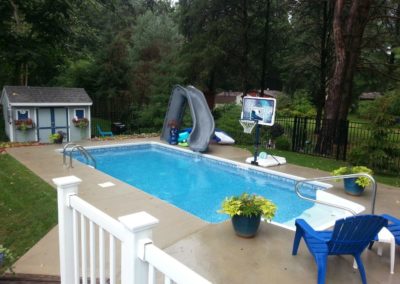
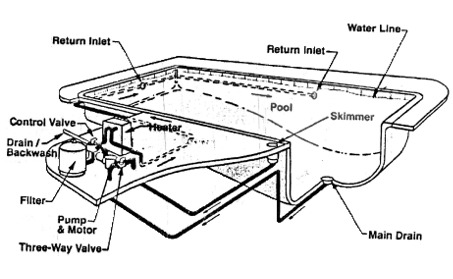
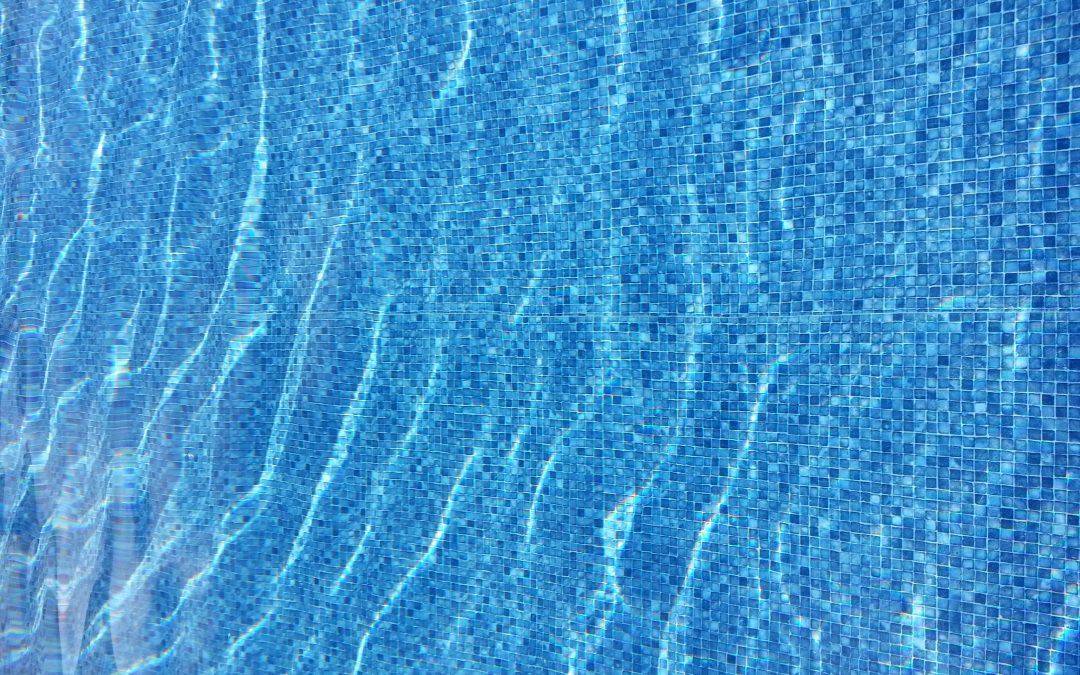

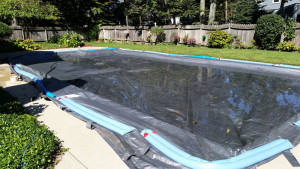
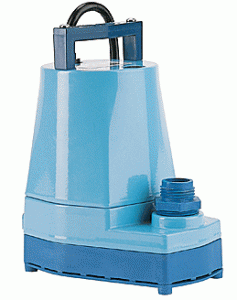
Recent Comments